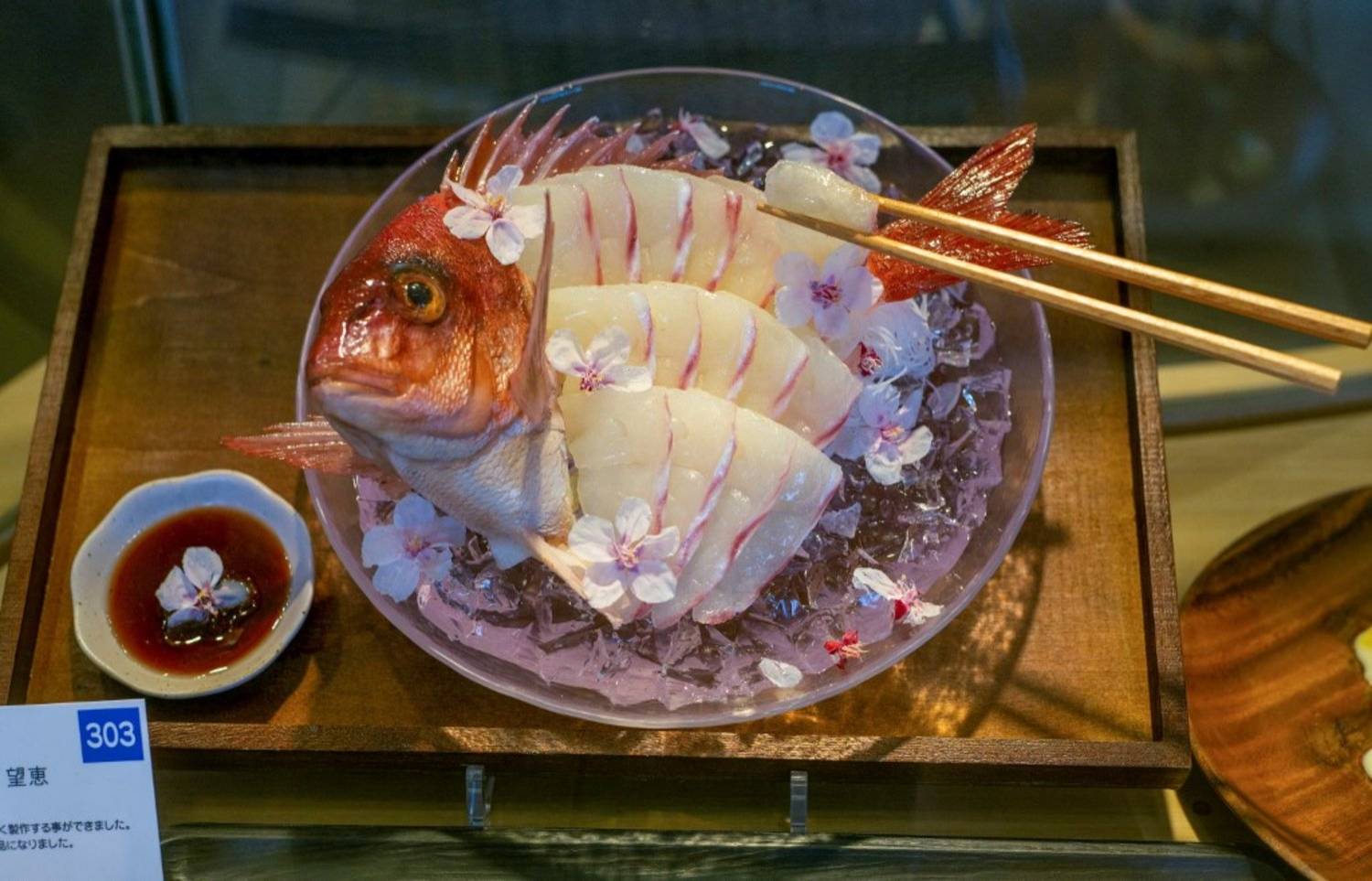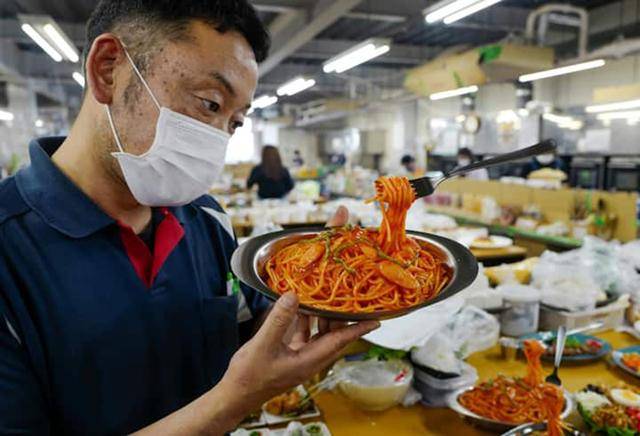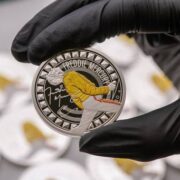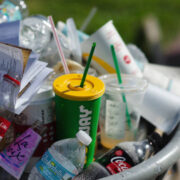Japan’s food replicas a hit among tourists

At a workshop in Tokyo, a dozen or so tourists watched as green and white wax was poured into warm water. As the liquid turned into a sheet, they were then asked to slowly pull it up and roll it, gasping at its transformation into a lettuce.
Hands-on lessons in the art of creating food replicas have caught on with foreign visitors keen to learn more about a distinctive Japanese craft that has evolved for over 100 years. An exhibit of food replicas has even been held in London this year.
The lessons were offered by Iwasaki Group, which is believed to have been the first to commercialize the production of food replicas in 1932.
Now used not only as window-display enticements by restaurants but also as training tools for farmers and as souvenirs, food replicas trace their roots to the period from the late 1910s to early 1920s in Japan, when dining out became popular due to the emergence of eateries, including at department stores.
The popularity of food replicas also grew in tandem with the spread of Western culture and ideas and helped introduce unfamiliar Western dishes to consumers in Japan.
Daniel Bucheli, a sales manager from Switzerland, booked a spot at the workshop at an Iwasaki-run shop in the Kappabashi area of Asakusa, a traditional downtown area of Tokyo, ahead of his five-week vacation in Japan in the fall.
“I wanted to try a cultural experience we can have only in Japan. Oishiso! (“Looks delicious” in Japanese),” he said as he playfully pretended to bite into the pumpkin tempura he made.
Sam Li, part of a separate group of 15 from Hong Kong, had his first try of food replica making. “I sent my 14-year-old daughter a photo and she said she definitely wants to try. I will bring her here for sure the next time we visit,” he said.
While the shop holds the workshops on the second floor, its downstairs section sells a wide range of food replica items including magnets and keychains. Visitors to the shop are first greeted by the sight of a towering multi-layered hamburger display and other delicacies.
Attention to detail
The wonder that has captivated many tourists owes a lot to the attention to detail by food replica artisans.
Every day, a factory in Yokohama, operated by Iwasaki group company Iwasaki Co., is bustling with 50 or so workers painstakingly crafting food replicas. The production process starts after real food is delivered in bowls or plates actually used in eateries.
The craftsmen first take a mold of each ingredient. After plastic resin is poured into the mold and heated in the oven, the basic parts are ready for coloring.
Artisans use airbrushes, mixing various colors, drawing the fine marbling lines on sashimi or small dots on the skin of pears made to look exactly like real ones.

The craftsmen traditionally spend three years taking molds and getting the feel of the different colors and textures of the ingredients before learning the coloring process.
The colored parts are then arranged together on the plate or bowl provided by the restaurant, followed by the finishing touches, such as pouring sauce or polishing.
“The goal is to make them look so real that you can practically smell them,” said Hiroaki Miyazawa, manager of the factory who has been making food replicas for 28 years. “The most difficult parts to recreate are raw ingredients like fish and herbal leaves.”
Struggling
However, despite the fascination exhibited by overseas visitors, the industry for creating food replicas has struggled due to decreasing demand in Japan for its products.
“Food replicas are still used in restaurants located within department stores but not as much in roadside restaurants,” Miyazawa explained, citing how the rate at which restaurants open and close nowadays has resulted in less usage of replicas.
Models of food items are believed to have first taken off after appearing at a branch of the now-defunct Shirokiya department store in 1923.
In response to the decreased demand from eateries, which account for the bulk of its revenue, Iwasaki has been exploring other potential markets.
Focusing on the Japanese agricultural industry’s labor shortage, it is developing replicas of crops such as vegetables and fruits for use in teaching unskilled or temporary foreign workers.
There is also demand from pharmaceutical companies for replicas of medicines.

















